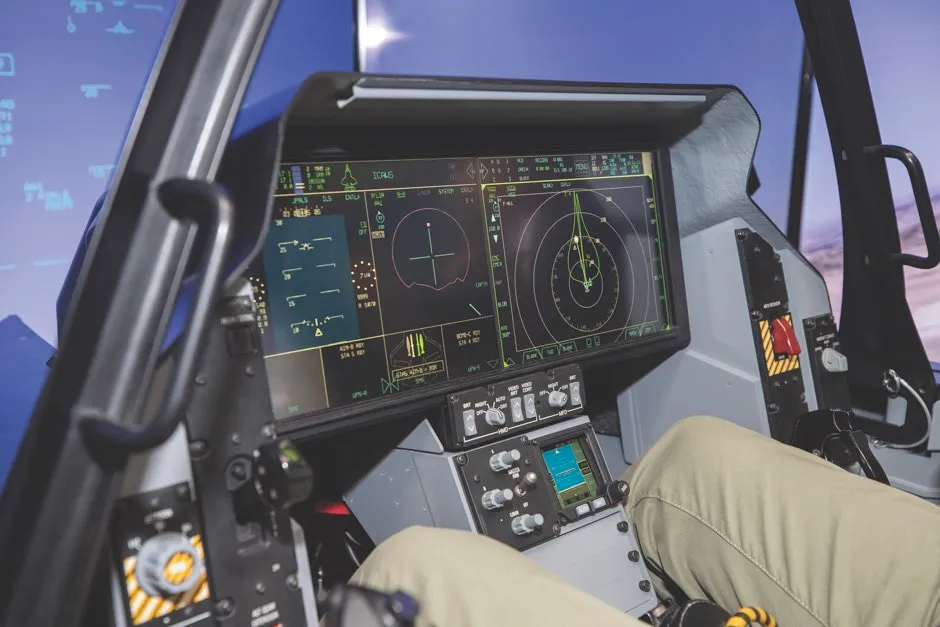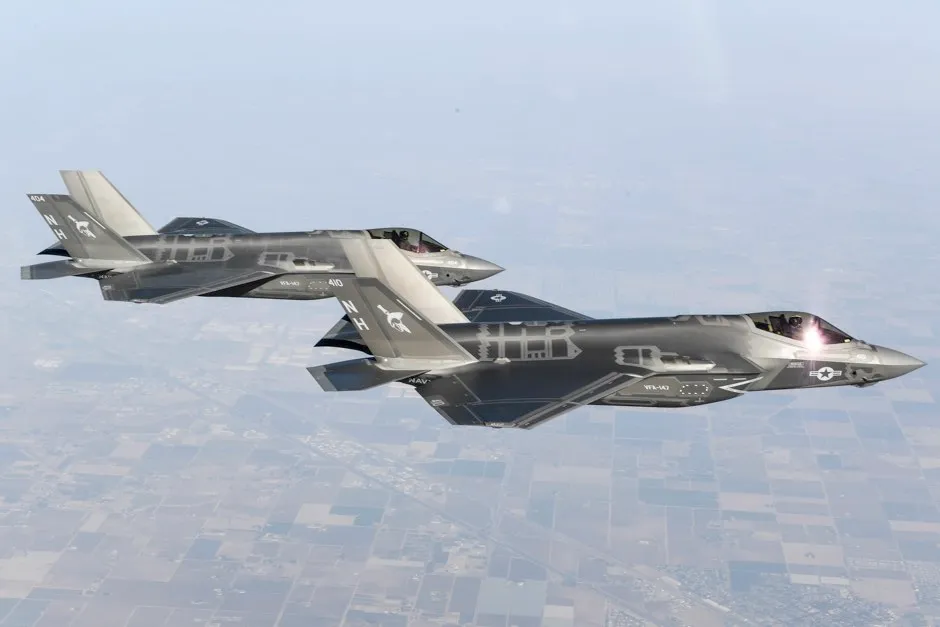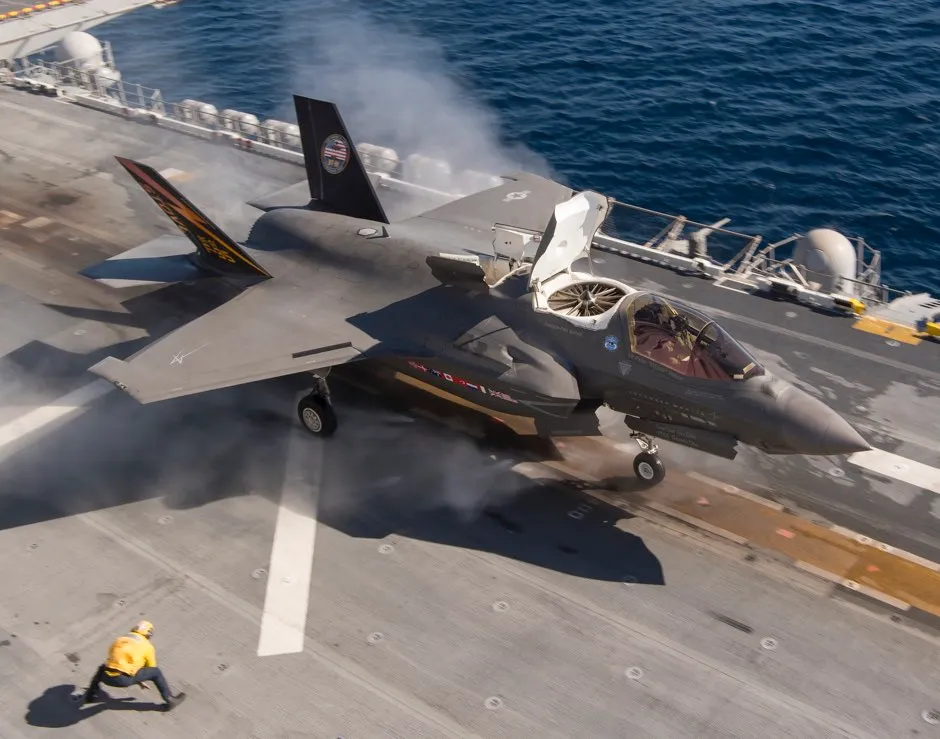The Lockheed Martin F-35 Lighting II is arguably the world’s most advanced fighter jet. Built on a mile-long production line in Fort Worth and costing around £100m apiece, the plane is wrapped in a cutting-edge stealth skin to avoid detection by enemy radar, and uses augmented reality helmets to give pilots an unparalleled view.
Almost 30 years in the making, the F-35 is a trillion-dollar global effort with investment from Australia, Canada, Denmark, Italy, the Netherlands, Norway, Turkey, the UK and the US. The RAF and Royal Navy have ordered 138 jets to be used on the UK’s two new Queen Elizabeth Class aircraft carriers. So far, 18 have been delivered, with plans for a further 30 by 2025.
Read more about the science of warfare:
- Could geoengineering cause a climate war?
- Nazis, magic and McCarthyism: the dark history of early American space exploration
- Space war: the new arms race above our heads
There are three variants of the F-35. The F-35A uses runways as normal, the F-35B is capable of short takeoffs and vertical landings, and the F-35C is designed for exclusive use on aircraft carriers, thanks to its foldable wings.
Dozens of all three versions of the F-35 are in production at Lockheed Martin, their aluminium and titanium panels finished in a luminous green primer before their stealth skin is applied. The skin, a polymer-based composite designed to absorb electromagnetic wave energy, is known as radar-absorbing material, or RAM, and is highly classified.

In 2019, 131 F-35s are expected to roll off the production line, with that increasing to 140 in 2020, and on to a total annual output of 170 aircraft. The facility employs over 16,000 workers; engineers navigate the building by bicycle or electric golf cart, while the jets are manoeuvred on jigs from one workstation to the next. Each 1,900km/h (1,200mph) jet takes about 58,000 man-hours to build, then is flown to the country that bought it via several rounds of in-flight refuelling.
Silent but deadly
Key to the F-35’s stealth is its smooth body. Instead of hanging weapons and fuel tanks from its wings and underbelly, the F-35’s arsenal sits inside the craft. That way, its ‘radar return’ – how much enemy radar signal bounces off the aircraft – is almost zero.
The plane’s invisibility to radar is even preserved around the engine air intakes, which normally give planes away on a radar image. The F-35 is furnished with serpentine inlet ducts, which radar signals bounce back and forth around on their way to the engine. As a result, little, if any, of the signal finds its way back out again, reducing the aircraft’s image on enemy radar screens.

The 15.7m-long plane isn’t invisible, of course, but to enemy pilots it might as well be. “If the enemy gets too close, it’s their bad day,” F-35 lead test pilot Alan Norman says.
But this near-invisibility can prevent conflict too. F-35 pilots can opt to avoid enemies and go about their business – a reconnaissance mission, perhaps – without being seen. “We don’t have to fight if we don’t want to. It’s tremendous,” Norman adds.
Flight school
Analogue dials are replaced by a 50cm by 20cm touchscreen, and pilots can adjust the layout to suit them. Instead of concentrating on each flight system and determining what that means for their control of the aircraft, F-35 pilots have more cognitive freedom to see the bigger picture and consider mission tactics.

This tech-first approach appeals to younger pilots, or as Norman describes them: “Digital natives, people who grew up with iPhones ... the aeroplane helps us do our missions so well that a 10-hour pilot can be as good as a 1,000-hour pilot.”
Norman adds: “Pilots become tacticians instead of technicians. Every jet becomes a battlespace commander because we have all this information.”

Finally, the F-35’s £325,000 pilot helmet is unlike any other. Airspeed, altitude and weapons targeting are projected on the inside of the visor, along with a 360° view captured by six external cameras then stitched together. “When the pilot looks down, their view is not obscured – they can see the terrain beneath the aircraft,” says Norman.
Sixth sense
“There’s no magic in this aeroplane,” Norman says. “But what’s closest is what we call sensor fusion ... it’s a quantum leap in technology never seen before.” Sensor fusion is what happens when an F-35 takes data from external sensors – like the heat signature of an aircraft several miles away – then interprets this, determines the threat level, and monitors the situation. If the potential threat level from that aircraft increases, the F-35 will let its pilot know and suggest they investigate.

The pilot can then look with their own jet or view data from the sensors of other F-35s. That way, four F-35s flying miles apart can share their view and data, giving each pilot a complete view of the battlespace.
“F-35s do not hunt as individual aeroplanes,” says Steve Over, Lockheed Martin’s director of business development. “They hunt as a pack, separated by vast distances in the airspace. If you’re flying an F-35 there is never a situation where someone sneaks up behind you. You can take that out of the equation.”

Read more about aeroplanes:
